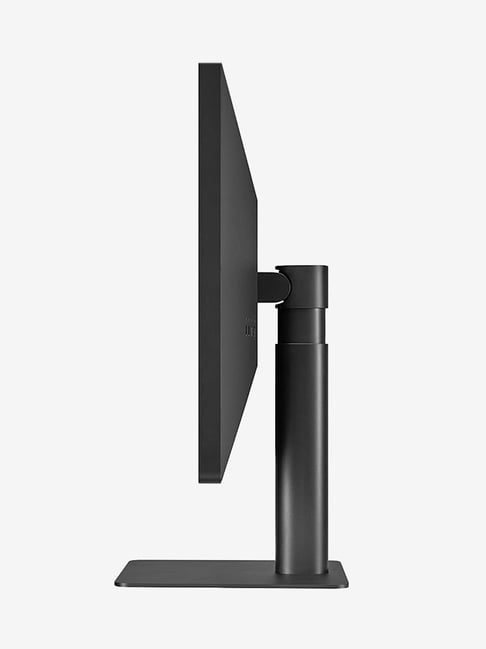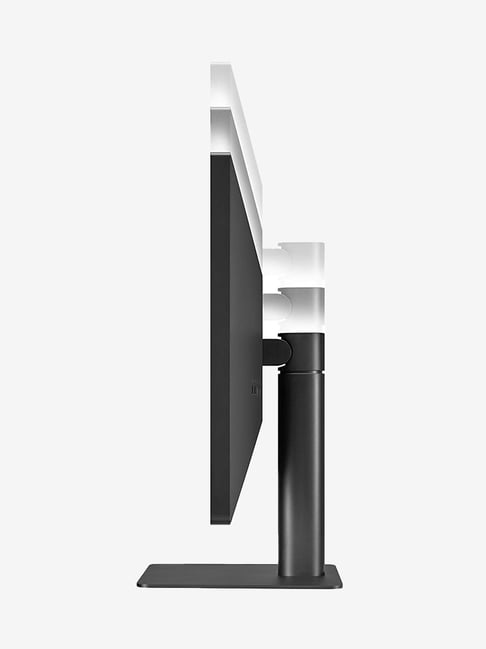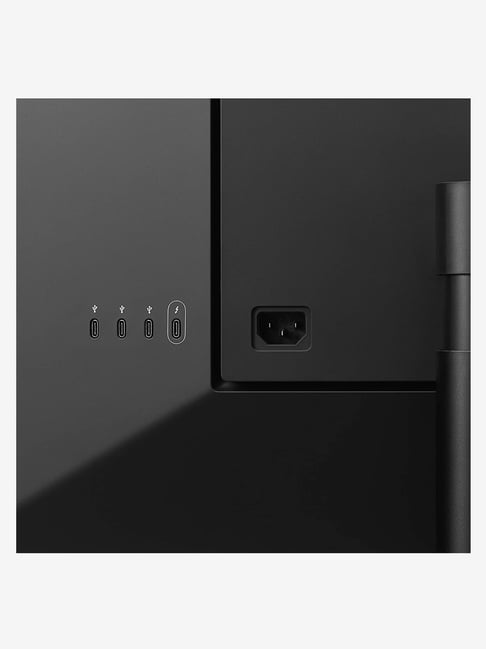
LG UltraFine 5K is compatible with more Macs and iPads. Studio Display comes with a power cord and Thunderbolt cable (1 m) LG UltraFine 5K comes with a Thunderbolt 3 cable (2 m), USB-C cable (1.5 m) and power cord. Studio Display supports 96W host charging over a single cable. Studio Display has studio-quality three-mic array and six-speaker sound system versus LG’s stereo speakers.  Studio Display has a 12 MP Ultra Wide camera with Center Stage. Studio Display has a nano-texture glass option. LG UltraFine 5K comes with a height-adjustable stand included. Studio Display has an aluminum versus creaky plastic body. Studio Display is slightly brighter at 600 nits versus LG UltraFine 5K’s 500 nits. Both are 27″ displays with a 5K resolution. Studio Display is compatible with more Macs and iPads. Studio Display comes with a power cord and a Thunderbolt cable (1 meter) Pro Display XDR comes with a power cord (2 meters), Apple Thunderbolt 3 Pro Cable (2 meters), and polishing cloth. Both have one Thunderbolt 3 port and three USB-C ports. Studio Display has a studio-quality three-mic array and six-speaker sound system. Studio Display has a 12 MP Ultra Wide camera with Center Stage Pro Display XDR doesn’t have a built-in camera. It costs $300 to upgrade Studio Display to nano-texture glass versus $1,000. Both displays auto-rotate content when turned portrait, but the Studio Display only rotates clockwise and its stand does not rotate, you need to buy a VESA mount that rotates the Pro Display XDR rotates in both directions and its Pro Stand supports rotating. Upgrading to a tilt and height-adjustable stand costs $400 for Studio Display versus $1,000 for Pro Display XDR. Both offer Apple’s True Tone technology, which adjust the display according to ambient light conditions.
Studio Display has a 12 MP Ultra Wide camera with Center Stage. Studio Display has a nano-texture glass option. LG UltraFine 5K comes with a height-adjustable stand included. Studio Display has an aluminum versus creaky plastic body. Studio Display is slightly brighter at 600 nits versus LG UltraFine 5K’s 500 nits. Both are 27″ displays with a 5K resolution. Studio Display is compatible with more Macs and iPads. Studio Display comes with a power cord and a Thunderbolt cable (1 meter) Pro Display XDR comes with a power cord (2 meters), Apple Thunderbolt 3 Pro Cable (2 meters), and polishing cloth. Both have one Thunderbolt 3 port and three USB-C ports. Studio Display has a studio-quality three-mic array and six-speaker sound system. Studio Display has a 12 MP Ultra Wide camera with Center Stage Pro Display XDR doesn’t have a built-in camera. It costs $300 to upgrade Studio Display to nano-texture glass versus $1,000. Both displays auto-rotate content when turned portrait, but the Studio Display only rotates clockwise and its stand does not rotate, you need to buy a VESA mount that rotates the Pro Display XDR rotates in both directions and its Pro Stand supports rotating. Upgrading to a tilt and height-adjustable stand costs $400 for Studio Display versus $1,000 for Pro Display XDR. Both offer Apple’s True Tone technology, which adjust the display according to ambient light conditions.  Pro Display XDR supports HDR content with 1,000,000:1 contrast ratio and 1,600 nits peak brightness.
Pro Display XDR supports HDR content with 1,000,000:1 contrast ratio and 1,600 nits peak brightness.  Studio Display is slightly brighter at 600 nits versus 500 nits. Studio Display is 5K resolution versus 6K. Studio Display packs a 27-inch screen versus Pro Display XDR’s 32-inch screen.
Studio Display is slightly brighter at 600 nits versus 500 nits. Studio Display is 5K resolution versus 6K. Studio Display packs a 27-inch screen versus Pro Display XDR’s 32-inch screen. 
Not to mention, the Studio Display comes with a stand included (The XDR’s costs a cool $1,000), and upgrading to a height-adjustable stand is only $400 extra. However, it has a few modern features missing from the Pro Display XDR like a built-in camera with Center Stage and a ‘studio-quality’ microphone and speaker system. It’s five inches smaller (that’s an entire K) and doesn’t support HDR content. The Studio Display doesn’t match all of the high-end specs of the Pro Display XDR.








 0 kommentar(er)
0 kommentar(er)
